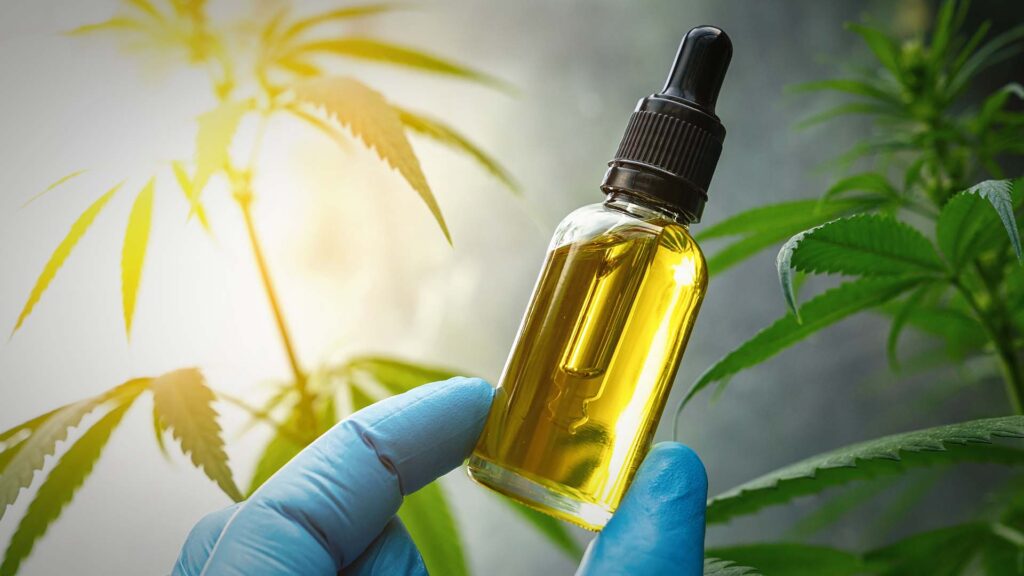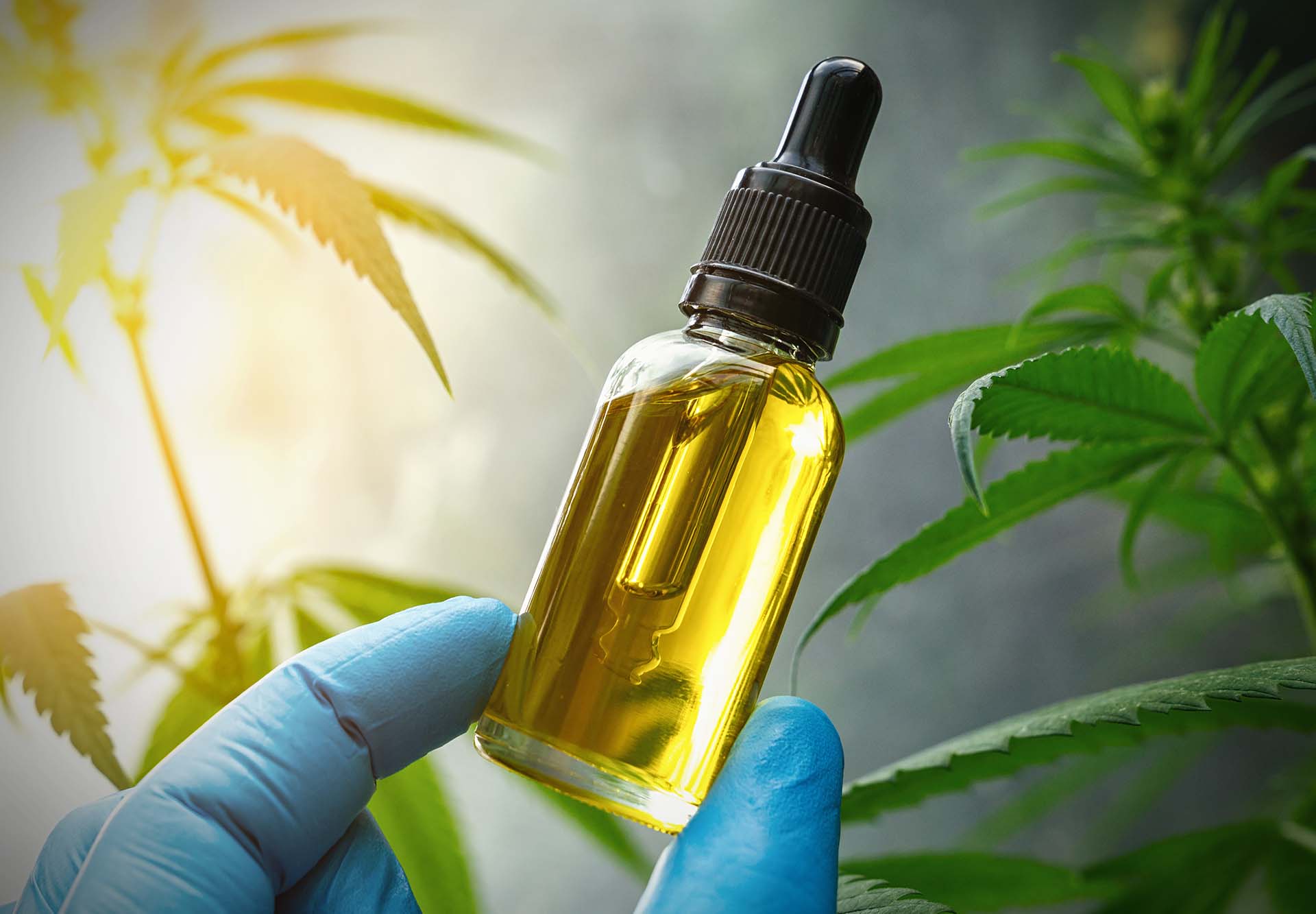There are several different methods that CBD oil producers use to extract CBD oil from the cannabis plant. Each one has its pros and cons. The two factors in choosing which method to use should depend on safety concerns and efficacy. In this article I will explain some of the different methods used to extract CBD oil, giving the pros and cons of each, as well as the safety concerns when choosing a method.

Different Methods of CBD Oil Extraction
Carbon Dioxide (CO2)
The popularity of CO2 extraction stems from its unique properties of using its solid, liquid and gas states in the process.
- CO2 in its natural gaseous state is subjected to very low temperatures at high pressure. This turns it into a liquid as it transitions to its supercritical state.*
- The fluid is then heated to a certain temperature and subjected to a further increase in pressure which results in a supercritical CO2 mixture.
- The supercritical CO2 liquid then passes through a chamber containing raw cannabis matter which dissolves the oils and the flavors from the cannabis matter. This chamber is maintained at a pressure level that allows the CO2 to remain in a liquid state.
- The resulting cannabis-enriched supercritical fluid is then pumped into a separation vessel. The use of pressure and temperature separate out the various compounds into two layers, one on top of the other. Think oil and water.
- The resulting mixture is pumped into a third chamber where the CO2 reverts back to a gaseous state, leaving behind the oil and flavors.
*Supercritical liquid is one in which it exhibits properties somewhere between a liquid and a gas.
Closed-loop extractors are typically used in CO2 extraction.
Winterization
Winterization is the process commonly used to separate the unwanted compounds such as fats, waxes and lipids from supercritical extractions.
The extract is combined with 200-proof alcohol and stirred vigorously, then put into a freezer overnight. The following day, the mixture is poured into a funnel through filter paper which strains out the unwanted compounds. Once its filtration is complete, heat is applied which results in the evaporation of the alcohol. This process may be used multiple times.
Liquid Solvent Extraction
This process works similarly to CO2 extraction and uses ethanol, butane, hexane or isopropyl alcohol to remove the oils and flavors from the cannabis material.
It is a cheaper and easier method of extraction. However, the use of solvents may give the oil a greenish cast and a bitter flavor due to the presence of chlorophyll and other impurities. There are adjustments to the process that can be made to reduce such an occurrence.
Steam Distillation
With steam distillation, CBD oil is separated from the cannabis plant material using steam.
- The plant material is contained in a glass flask which has an inlet which connects to another glass container filled with water. It is located underneath the plant flask. There is also an outlet that connects to a condenser tube.
- As the water begins to boil, the steam enters the plant flask which separates the oil vapors contained in the CBD.
- These vapors are trapped in the tube that condenses them into oil and water.
- The oil and water mixture is collected and distilled which extracts the CBD oil from the water.
This is the oldest method used to extract oils, but it has many drawbacks.
- It is the least efficient, making it difficult to ascertain the exact amounts of the CBD extracted.
- It requires much more plant material than the other methods.
- If the steam gets too hot, it can have a deleterious effect on the chemical properties of the cannabinoids.
Safety Considerations For CBD Oil Extraction
The following areas of safety concerns include:
Proper Types of Materials
- Stainless steel materials are required for oil for human consumption
- Specific electrical components are required for flammable solvents
- Specific electrical components are required for non-flammable solvents
- Specific pressing ratings must be maintained for different methods
- Relief valves to control the pressure must be set at certain levels
Equipment Considerations
- For food grade, welds that touch extracted material must be flush and polished
- There must be acessibility to vessels and piping to ensure proper cleaning
- Storage tanks must be made out of stainless steel to avoid any corrosion
Appropriate Facility For Each Extraction Method
- Compressed Flammable Gases
Appropriate electrical fixtures, safety equipment and a safety plan are required in case flammable gas is released into the area surrounding the equipment
- Ethanol & Alcohol
Vent hoods or the equivalent are required for walk in areas
- CO2
A monitoring and alarm system are required in case of CO2 leaks
Safety Ratings For Solvents Used For Human Consumption
The FDA issues a Generally Regards as Safe (GRAS) rating
- CO2 receives a GRAS
- Compressed Gas receives a GRAS for use as a propellant but there is a difference of opinion among states on safe levels of residual solvents
- Ethanol receives a GRAS for food products, but there is a difference of opinion among states on safe levels of residual solvents
Efficacy of CBD Oil Production
CO2 Pros
- No residual solvents
- Preserves the terpenes
- Few safety requirements and costs are required
- Automation is simple to implement
For different molecular weights, a variety of temperatures and pressure levels can be set to create a selection of products
CO2 Cons
- The equipment is expensive; if less expensive equipment is used, the rate of extraction is much slower
- Systems must be operated manually and are complicated
Hydrocarbon Pros
- Equipment is more affordable than for CO2
- Fast rates of extraction are achieved
- High potency levels are achieved
- Excellent process for dabs
Hydrocarbon Cons
- Requires expensive facilities
- Automation that is required is costly and difficult
- Local regulators and inspectors monitor the facility
- Requires residual solvent testing which is an additional expense
- It is not selective or tunable
- The scale of the operation is limited by the quantity of hydrocarbon allowed at each site
Ethanol Pros
- The equipment is very inexpensive
- The facility is less expensive to run when compared to hydrocarbons facility
- The process requires less power than at a CO2 facility
- Extraction rates are fast
- It is easy to scale
Ethanol Cons
- Fume hood is required due to the flammability of the solvent
- A secondary processing is require
- Chlorophyll is extracted and remains in the solution
- Not tunable or scalable
- Lack of Commonly Accepted Standards
Due to a lack of commonly accepted standards in the cannabis industry today, CBD product manufacturers are forced to use personal subjectivity when creating their products. There are groups such as the Foundation of Cannabis Unified Standards (FOCUS) and ASTM International that are currently working to rectify this situation.
Sources:
apekssupercritical.com, How To Extract CBD Oil – The Extraction Process & How To Make CBD Oil
americancannabisconsulting.com, How Is CBD Oil Made and Extracted? July 15, 2019
extractlabs.com, What Is CO2 Cannabis Extraction? Aug. 20, 2019
cbdoil.org, CBD Extraction Methods, March 30, 2019

